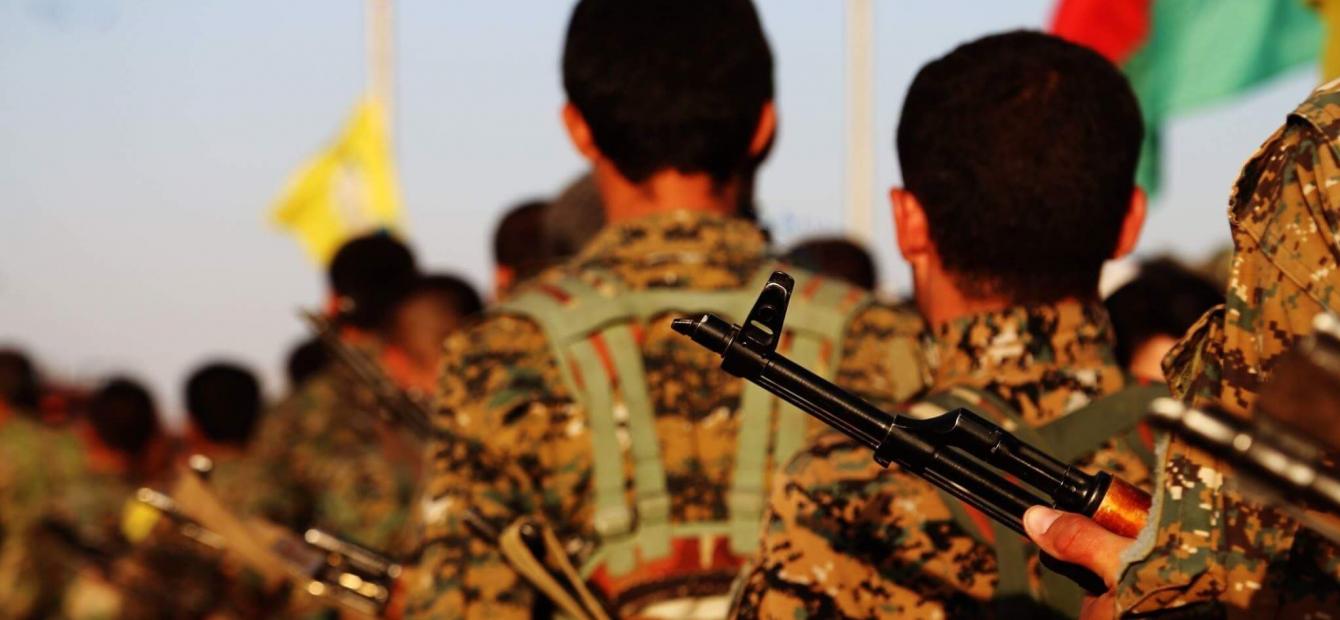
Syria: Foreign interventions and the revenge of realpolitik
Afghanistan, Syria, Libya and Mali have been hotbeds of conflict for years on end. In each of these conflicts, the West is involved, either directly or indirectly by means of NATO or UN missions. In this Clingendael Spectator series on Western interventions, the current status and the future of the conflicts will be analysed. Second stop: Syria, where the Turkish invasion that started on 9 October is only the latest illustration of the fact that the Syrian civil war has featured one foreign intervention after another. This article provides an assessment of the tactical military success and the broader strategic effects of eight sets of intervention.1
The third Turkish invasion of Syria that started on 9 October between the towns of Tel Abyad and Ras al-Ain – ironically named ‘operation Peace Springs’ - offers only the latest illustration of the fact that the Syrian civil war has featured one foreign military intervention after another since 2011.
They include indirect and direct Iranian military involvement in support of President Assad; financial support from Gulf-based Salafi networks for armed Islamic opposition forces; thousands of foreign fighters flocking into Syria in support of extremist jihadi non-state armed groups; several Western train and equip programs in support of groups linked with the Free Syrian Army; a Russian expeditionary military intervention in favor of the Assad regime; aerial bombardment by the Global Coalition to Counter the Islamic State of Iraq and the Levant; US and French military deployments in Kurdish Syria; as well as several Turkish military incursions into northern Syria. Most of these interventions have been initiated by foreign states, but transnational non-state and quasi-state actors have also played important roles.
In total, one can distinguish at least eight major sets of foreign intervention in the Syrian civil war.2 Some consist of a series of operations in successive pursuit of a single strategic objective, consider the cases of Iran3 and Turkey4 respectively, whereas other interventions represent more of a one-off or continuous effort, such as the Russian expeditionary deployment of 2015.
Why the Syrian civil war internationalised
The Syrian civil war internationalised rapidly after 2011 because it is salient in multiple strategic dimensions. To start with, Syria represents another battlefield of the Arab Uprisings on which various extremist, Islamic and more secular revolutionary forces are pitted against an authoritarian status quo in a fight for control over political order.
Initially, positions were relatively clear with Turkey, Kuwait and Qatar supporting Muslim Brotherhood-related opposition groups that sought to expand the writ of political Islam in Syria, while Saudi Arabia and the UAE supported the reactionary Assad regime for a short while.
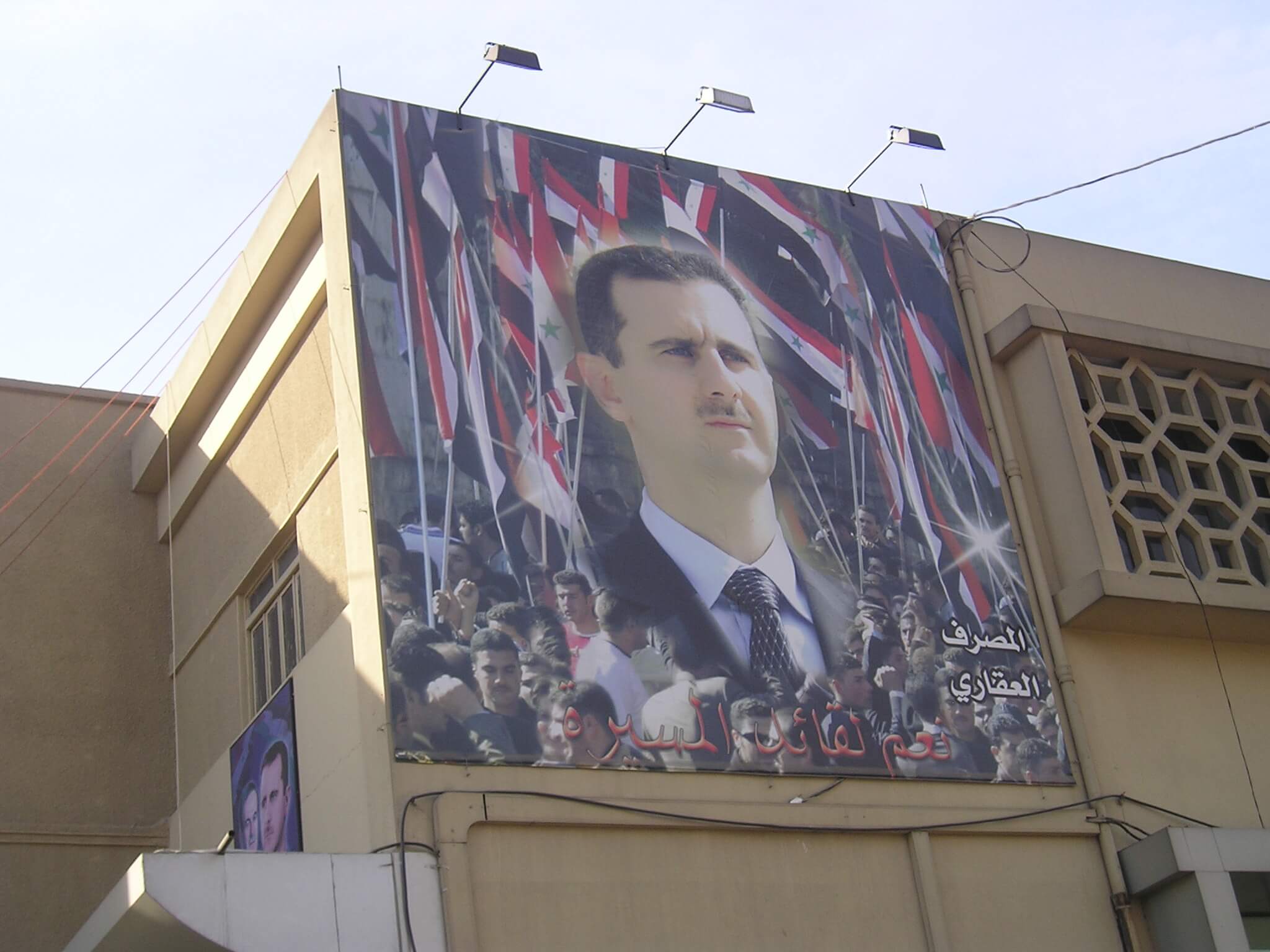
However, Saudi Arabia and the UAE soon switched their support from Assad to the opposition in a bid to reduce Iranian influence in Syria, especially when they realised that wider US-Iranian rapprochement was set to continue (culminating in a nuclear deal they opposed). Although most Gulf states came to support the Syrian opposition, they usually did so in competition with one another, which rendered their efforts much less effective than they could have been.5
Their efforts to help overthrow Assad notwithstanding, recent diplomatic and trade overtures between the Syrian regime and several Gulf States suggest that most are ready to cut their losses and welcome ‘Assad Inc.’ back into the authoritarian fold to regain at least some leverage.
In addition, Syria is part of the post-1979 Iranian regional constellation of allies and clients that dates back to the Lebanese civil war of 1975-1990 and the Iran-Iraq war of 1980-1989. This network was always in conflict with the US, Israel and Saudi Arabia, but the intensity of this conflict increased after 2011 when President Assad’s rule was challenged, and again in 2018 when President Trump withdrew from the Iran nuclear deal.
Control over Syria means control over the flow of goods, people and activities between several (sub)continents that can be used for political advantage
Both events created opportunities for anti-Iranian forces to remove Syria as essential strategic element from its regional network.6 It is in fact surprising that neither the US nor the Gulf States intervened more forcefully and more directly on behalf of the Syrian opposition for this reason.
Explanatory factors include the parallel negotiation of the nuclear deal (concluded in 2015) that caused the US and the E3 (Germany, the UK and France) to ‘overlook’ the role of Iran in Syria, as well as the transformation of the Syrian civil war from an uprising against a dictatorship into another war on terror, at least in Western eyes.7
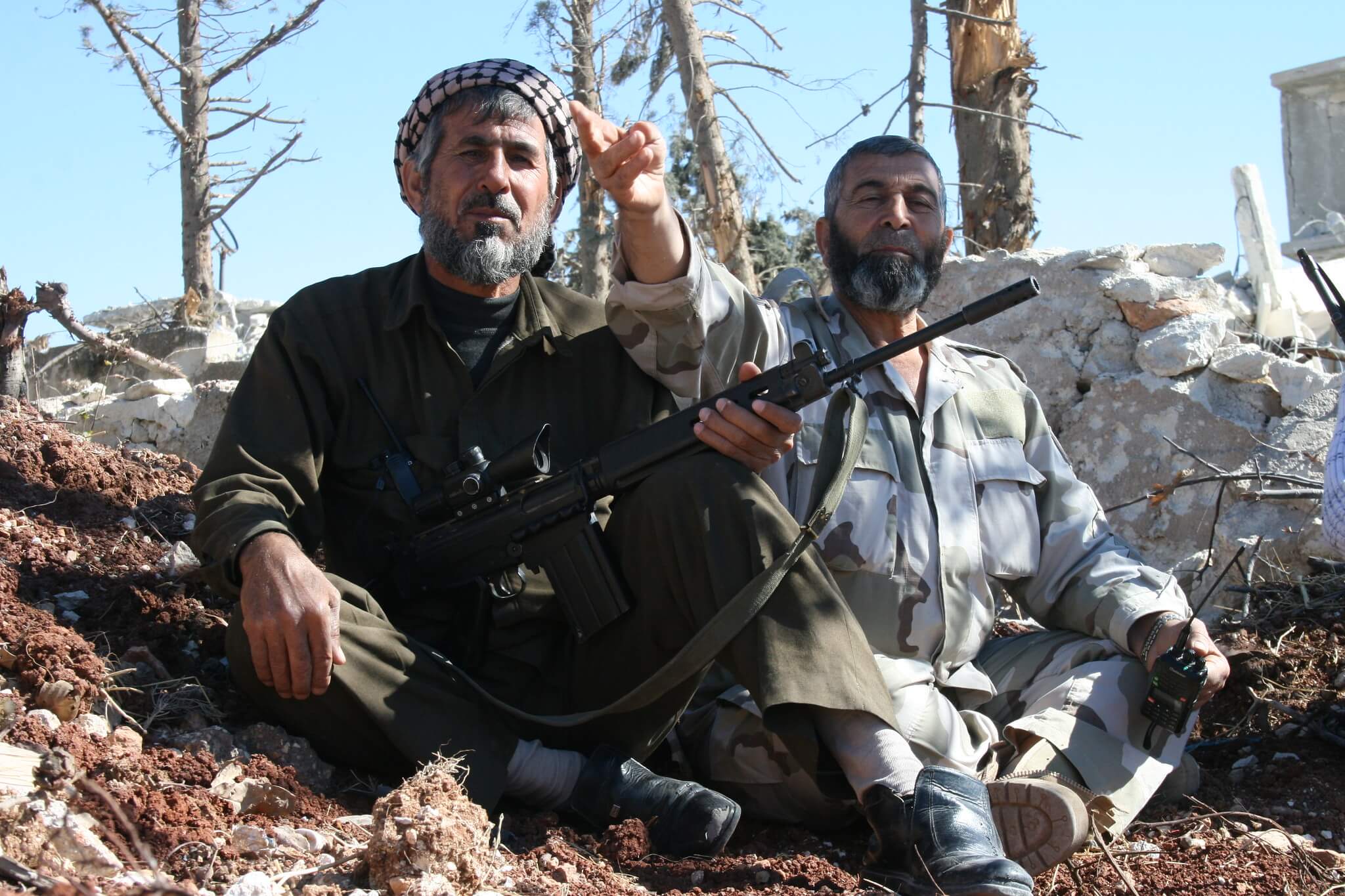
Finally, Syria – together with Jordan – represents the modern-day Levantine crossroads that link Europe with Iraq/Iran, the Gulf and Northern Africa. In other words, control over Syria means control over the flow of goods, people and activities between several (sub)continents that can be used for political advantage.
A key geopolitical feature is that rule over Syria can be used to amplify as well as dampen both the Kurdish and the Palestinian conflict through sanctuary, material support and diplomacy.8 Running Syria also enables exercising significant influence on Lebanon, at least for as long as the Israeli - Lebanese conflict remains unresolved.
Assessing the effect of foreign military intervention in Syria
It is in this context that the effects of foreign interventions in the Syrian civil war must be assessed. Figure 1 below offers an initial analysis of their tactical (military) success and their broader strategic effect on regional order.
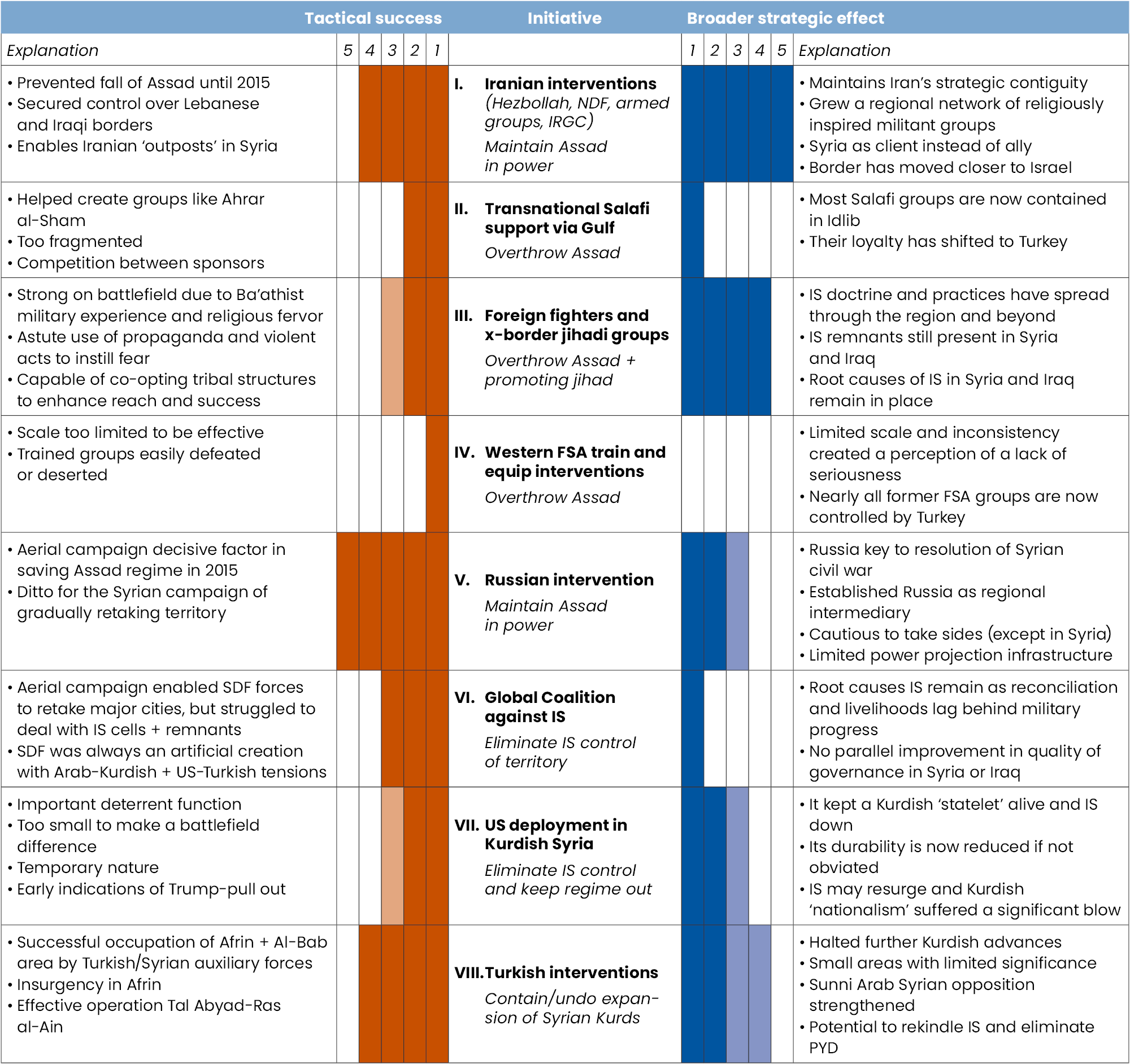
Note 1: Italicised text highlights the political objective of each (set of) interventions.
Note 2: Should the Turkish operation ‘Peace Springs’ seek to either enter majority-Kurdish urban areas like Qamishlo or Kobani, or further deepen its buffer zone between Tel Abyad and Ras al-Ain, assessment of the effect of ‘VIII. Turkish interventions’ is likely to change. The lighter blue shading anticipates the greater regional impact that could result.
There are a number of provisional observations to draw from the assessment of foreign interventions in the Syrian civil war as laid out in Figure 1.
To start with, it is arguably only the set of Iranian interventions that combines a high degree of tactical success with a high degree of strategic relevance. Much of the tactical success of Iran’s interventions is due to its persistence and its agility in adjusting its military resource mobilisation strategies to battlefield requirements.
Much of its strategic success consists of holding on to what it already had before 2011 while expanding its direct influence in Syria via a range of armed groups loyal to Tehran and a client in the form of President Assad. Its room for maneuver has expanded well beyond working via a centralised Syrian state that had to be treated as an ally. Whether this will be a true advantage remains to be seen.
On the one hand, the development creates an opening for Iran to strengthen its regional military infrastructure but on the other hand the development also exposes Iran to greater pushback as its existence becomes more obvious.
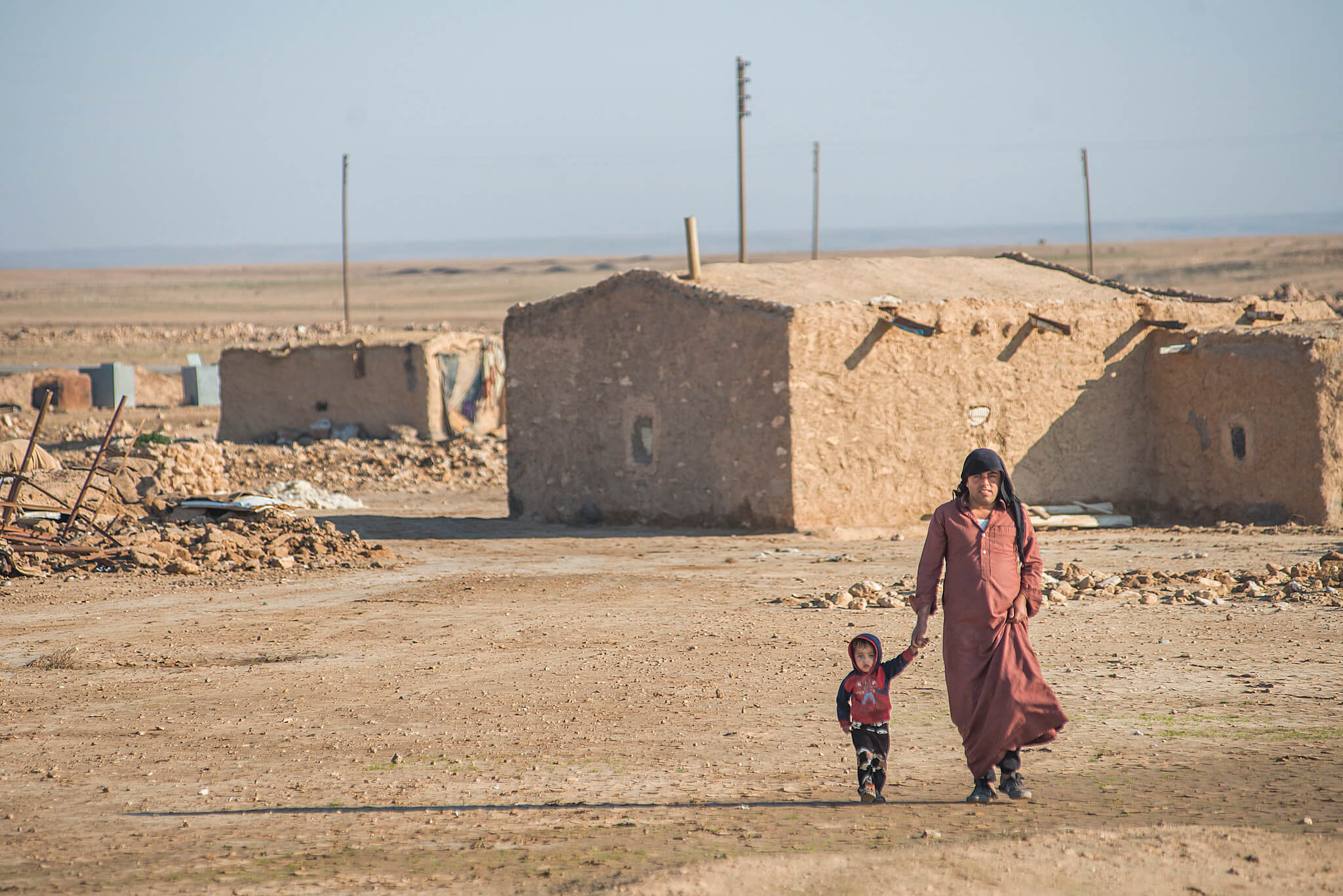
It must be added that the interaction between jihadi concepts/groups and the large flow of foreign fighters into Syria will also have a lasting strategic effect on the region despite the (tactical) battlefield defeat of such groups, in particular the Islamic State. Large numbers of foreigners and an entire generation of the local population has been brutally exposed to, or supported, the full force of the binary and eschatological view of the IS in a region where governance is often sectarian, authoritarian and few ways exist for the marginalised to voice their grievances effectively in a peaceful manner.9
Another observation that can be drawn from Figure 1 is that there have been quite some tactical military successes (the interventions of Russia and the Global Coalition, as well as Turkish military incursions) that had limited strategic relevance. In other words, they achieved their battlefield objectives, but their broader strategic effects are debatable:
- Russia has rescued Assad’s regime on the battlefield and is rebuilding its regional network of influence by avoiding taking sides and acting as intermediary where possible. Yet, the Syrian regime will not revert to being the autocrat-cum-ally it once was because Iranian influence is too significant, Syria’s centralised governance has been replaced by intersecting networks of power10 and because the Syrian economy has been destroyed while reconstruction funds remain scarce.11 Furthermore, Russia’s footprint remains small and is largely based on traditional diplomatic relations and shared energy interests.12
- The Global Coalition has been successful in eliminating Islamic State territorial control but relied on Syrian Kurdish armed forces (YPG) that became gradually more dominant and intolerant of dissent in much of northeast Syria. Their presence is increasingly disputed in the Arab majority areas that IS used to occupy (like Raqqa and Deir ez-Zor).
This situation is not sustainable, especially not after the recent Turkish offensive. A key consideration pertaining to the regional perspective is that the pace and nature of reconstruction and reconciliation of the Sunni population across the border in Iraq leaves most root causes intact that allowed IS to emerge. The same is likely to happen in Syria.
- The Turkish military incursions into Afrin and the Al-Bab-Jarablus-Azaz area are territorially limited and only create a limited buffer zone that is irrelevant to the broader regional contestation of which the Syrian civil war is a manifestation. This assessment would only change if Turkey decided to use its auxiliary Syrian armed opposition groups deployed in the areas of Afrin and Al-Bab-Jarablus-Azaz more broadly throughout the region (presumably mostly against the Kurds).
- It is harder to assess Turkey’s current ‘Peace Springs’ operation. If it proceeds into Kurdish majority urban areas like Kobani or Qamishli, or seeks to establish a buffer zone deeper than the current 30 kilometers between Tel Abyad and Ras al-Ain, it will deal an even harsher blow to the Syrian Kurdish project to achieve greater autonomy, as it will compel the Syrian Kurds to strike a more encompassing deal with the Assad regime on unfavorable terms to protect themselves. The long-term effect of the operation may well be the opposite of what it envisages: growing Kurdish frustration under greater Turkish13 repression with further cycles of radicalism and violence unfolding across the region.
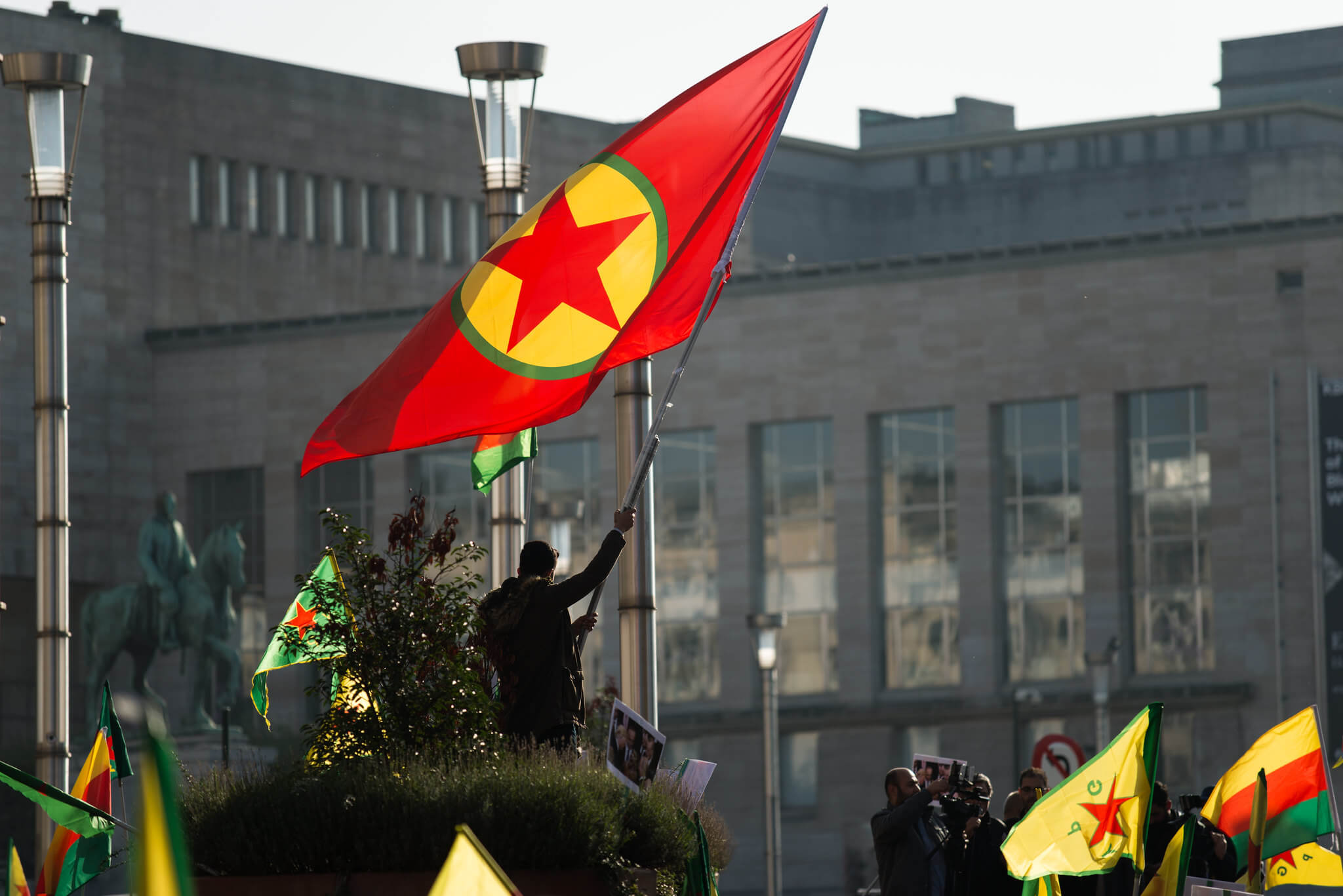
A final observation based on Figure 1 is that US military intervention has been limited and intervention from European countries has been too insignificant to make any difference.14 This will have several long-term negative effects, including a significant weakening of both the moral imperative and the practical case for future humanitarian intervention (if not in Syria, why elsewhere).
In addition, the West will have no leverage over (or even understanding of) the failed state that Syria is becoming and from which negative externalities will continue to spread once the guns fall silent - consider regional instability (e.g. greater confrontation between Israel and Iran), refugees, criminal activities (e.g. drugs, trafficking) and extremism.
The inevitable future irrelevance of the multilateral system in the Syrian civil war and its aftermath also creates a major strategic problem for Europe
In fact, the West is actively contributing to an Assad victory-cum-re-entrenchment by continuing to substitute humanitarian aid – significant parts of which are being captured by the regime for years now15 - for a well thought out conflict mitigation strategy.
Finally, the re-entrenchment of the Assad regime in the “more homogeneous Syria” that it considers desirable, means that the Syrian refugee diaspora will be a long-term feature. As most Syrian refugee made their way to Lebanon, Jordan and Turkey, as well as many to Europe, the unresolved nature of their stay (and rights) will weigh heavily on the future.
The revenge of realpolitik
The foreign military interventions of the Syrian civil war have largely been undertaken with scant attention on the part of its undertakers to either the spirit or the letter of the UN Charter.16
While such a ‘revenge of realpolitik’ is not new (consider the US in Iraq, Russia in the Ukraine, or China in the south Chinese sea), it does create another major negative precedent away from a stronger role for the UN in global conflict management.
This will likely lower the barriers for similar foreign military intervention in the future when Security Council members cannot agree on a way forward to manage a particular conflict.
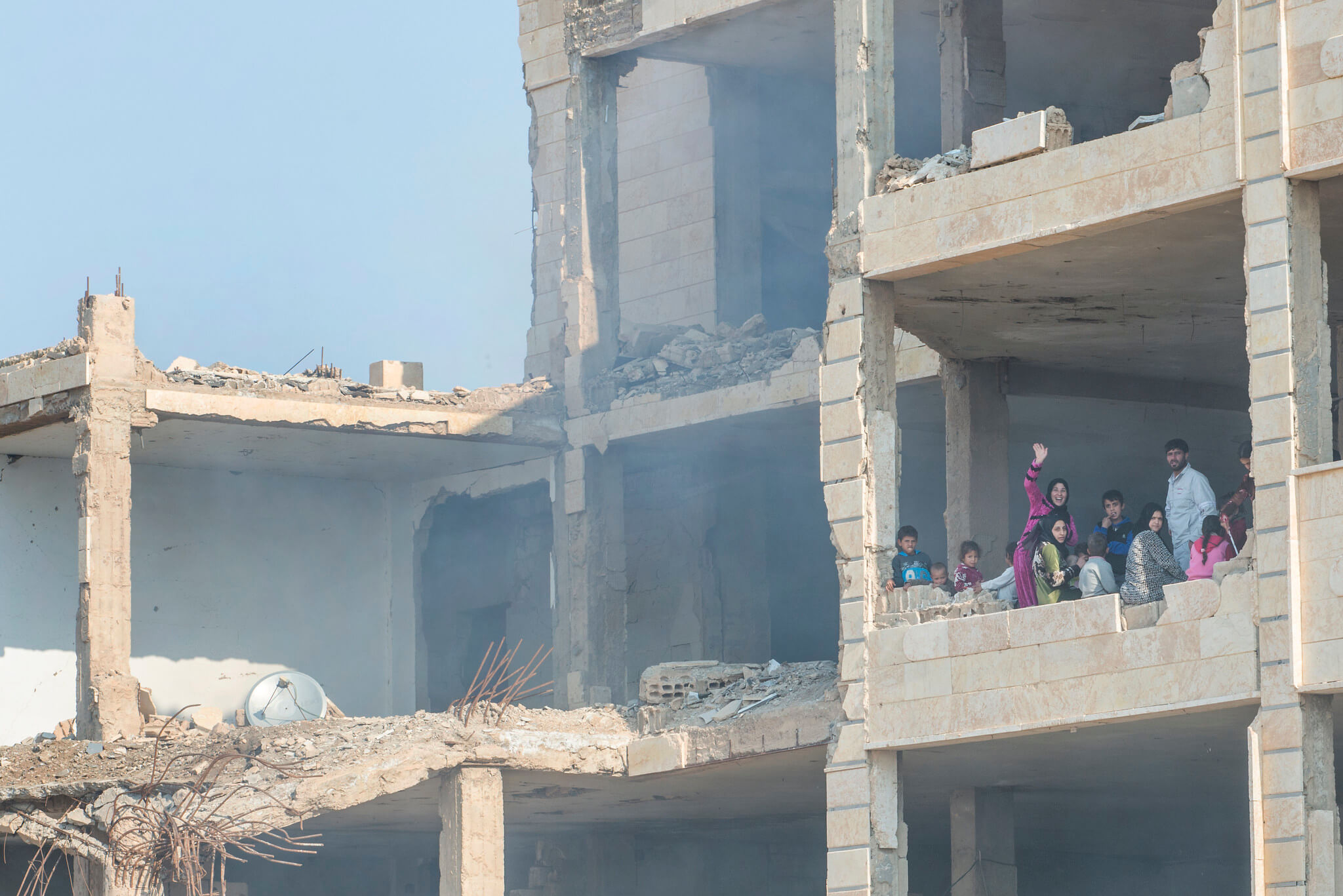
Moreover, the complete disregard – apart from apathy, rhetoric and handwringing - for the humanitarian consequences of foreign intervention in the Syrian civil war (such as massive collateral damage and the deliberate targeting of civilians) further reduces the moral, reputational and accountability cost of committing war crimes.
The inevitable future irrelevance of the multilateral system in the Syrian civil war and its aftermath also creates a major strategic problem for Europe.
It will be the first to face the negative externalities of either a frozen conflict scenario (when Idlib, Turkish Syria and Kurdish Syria remain ‘autonomous’) or a scenario in which the Assad regime re-entrenches itself, but has limited influence due to its minimalist role during the conflict and its lack of leverage. This time it will not be able to use the multilateral system as intermediary to advance its interests.
From this perspective, improved strategic relations between the EU and Iran - by stepping up in the nuclear deal conundrum - and between the EU and Russia - by finding a solution to the Ukraine – do not just have benefits in and of themselves, but can also open routes towards political change in Syria in the medium-term, and offer a chance to help prevent it from sinking further into chaos.
- 1I define ‘tactical military success’ as battlefield success and ‘broader strategic effects’ as their impact on the constellation of socio-political forces that battle for dominance across the Middle East. The assessment is preliminary as the Syrian civil war is far from over. My thanks go to Samar Batrawi and Engin Yüksel (both Clingendael), as well as the editors of the Spectator, for their critical review. The paper is part of Clingendael’s Levant research program on the relation between militancy and political order.
- 2For a more in-depth overview of these interventions: Ahmadian, H. and P. Mohseni, ‘Iran's Syria strategy: the evolution of deterrence’, International Affairs, Vol. 95/2, March 2019, pp. 341–364, online; Van Leeuwen, J. and E. van Veen, Turkey in northwest Syria: Building empire at the margins, The Hague: Clingendael, 2019; Oweis, K., Syria after the Russian Intervention: Moscow Tips the Military Balance in Favor of the Regime, Pursues Parallel Diplomacy, SWP Comment 2016/C 16, 2016; Zisser, E., Russia’s war in Syria, Tel Aviv: INSS, Strategic Assessment, Volume 19, No. 1, 2016; Lister, C., The Syrian Jihad: Al-Qaeda, the Islamic State and the Evolution of an Insurgency, Oxford: OUP, 2016; Pierret, T., Salafis at War in Syria. Logics of Fragmentation and Realignment, HAL, online, 2017; Gurcan, M, Turkey has a multiphase game plan for Syria operation, Al-Monitor, 10 October 2019; International Crisis Group Alert, 10 October 2019.
- 3The Iranian ‘intervention set’ consists of the successive deployment of Hezbollah, the creation of the Syrian National Defense Forces (NDF) based on the Irananian Basji model and the mobilization of transnational paramilitary groups such as Iraq’s Asaib ahl al-Haq or the Afghan Fatemiyoun brigade. See: Ahmadian, H. and P. Mohseni, ‘Iran's Syria strategy: the evolution of deterrence’, International Affairs, Vol. 95/2, March 2019, pp. 341–364, online.
- 4The Turkish ‘intervention set’ consists of Operation Euphrates Shield (2016), Operational Olive Branch (2018) and Operation Peace Springs (2019). On the first two operations: Van Leeuwen, J. and E. van Veen, Turkey in northwest Syria: Building empire at the margins, The Hague: Clingendael, 2019; on the latter: Al Jazeera, ‘Turkey's military operation in Syria: All the latest updates’, (accessed 16 October 2019).
- 5For a more detailed assessment of the interactions between various Gulf states and Islamist opposition forces in Syria: Pierret (2017), op.cit.
- 6Syria’s strategic importance also helps us understand the tenacity with which Iran has supported the Assad regime despite the high financial and moral cost of doing so. The moral costs are understood in Tehran but considered as the inevitable price for maintaining Syria as strategic asset. Source: Several interviews in Tehran in January 2019.
- 7The US and the Syrian regime unwittingly entered into a partnership to bring this transformation about. The US contributed through its 2003 invasion of Iraq and subsequent fight against the Sunni insurgency (2004-2009) that boosted extremist and militant forces Al-Qaeda could first exploit and later export across the border. President Assad contributed through his discourse that equates opposition with terrorism, the release of hundreds of extremists from Syrian state prisons and non-aggression pacts with the Islamic State. For example: Lister (2016), op.cit.
- 8On the Kurdish issue: Allsop, H., The Kurds of Syria: Political Parties and Identity in the Middle East, London: IB Tauris, 2015.
- 9See: Clingendael publication, ‘The return of authoritarianism is priming the Middle East for more conflict’ (accessed 27 October 2019).
- 10Khatib, L. and L. Sinjab, Syria’s Transactional State: How the Conflict Changed the Syrian State’s Exercise of Power, London: Chatham House, 2018.
- 11See Synaps, ‘War by other means. Syria’s economic struggle’, (accessed 16 October 2019).
- 12See for instance: Carnegie, ‘A Brief Guide to Russia’s Return to the Middle East’, (accessed 27 October 2019).
- 13Turkish military operations against the PKK in northern Iraq have consistently been carried out with Erbil’s consent. See: Al-Monitor, ‘Iraqi Kurds actively support Ankara’s fight against the PKK’, (accessed 27 October 2019).
- 14For example, despite the parliamentary drama that may lead one to think it was decisive, the Dutch non-lethal support program for Syrian armed opposition groups amounted to a paltry 25.6 million Euro over 2015-2018.
- 15See for instance: Rupert. S, Aiding and abetting: On the limits of humanitarian work in Syria, online, 2019.
- 16Turkey has, for example, sought to justify its operation ‘Peace Springs’ on the basis of article 51 of the UN Charter (self-defense). But this article does not provide a legal basis for an offensive operation on the territory of another state. Publicly accessible, and adequately triangulated, evidence of regular major YPG attacks on Turkish targets, which the Turkish government claims to have occurred, is also absent.





1 Comments
Load comments
Syrie- Erwin van Veen
Excellent artikel met goede conclusies- EU moet realistisch zijn en uit eigenbelang zorgen dat Syrië op termijn weer stabiel wordt en een vestigingsplaats voor de miljoenen ontheemden/vluchtelingen. Dat vraagt creatief denken en samenwerken met ons onwelgevallige autoriteiten. Wellicht zijn investeringen door EU in wederopbouw in Syrië zinvoller dan betalingen voor een status quo aan Erdogan. EU overleg hierover met Moskou zou een eerste stap kunnen zijn om na te denken over een effectieve samenwerkingsstructuur en een programma dat veiligheidsgaranties biedt aan terugkerende vluchtelingen. Mooi uitgangspunt voor een volgend artikel.
Add new comment